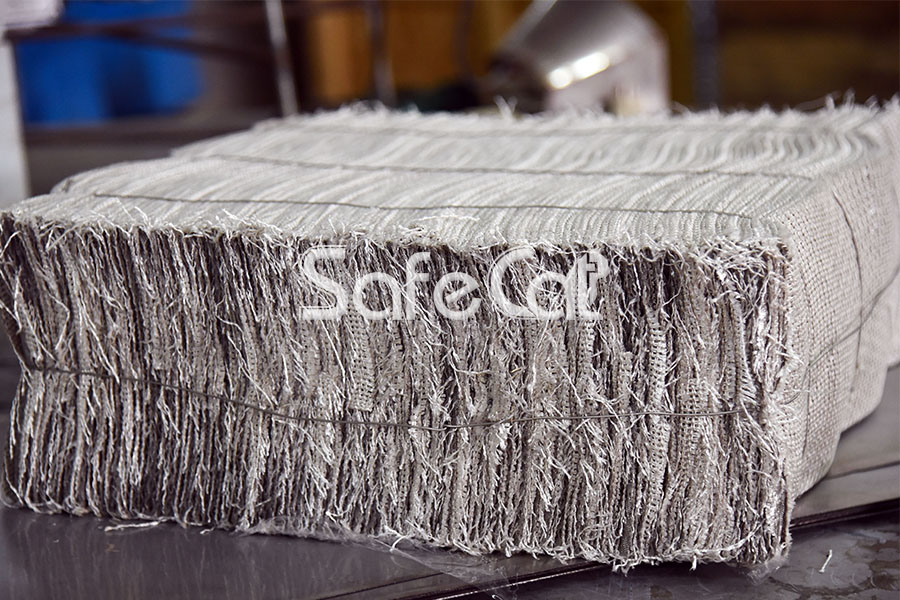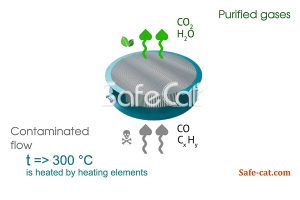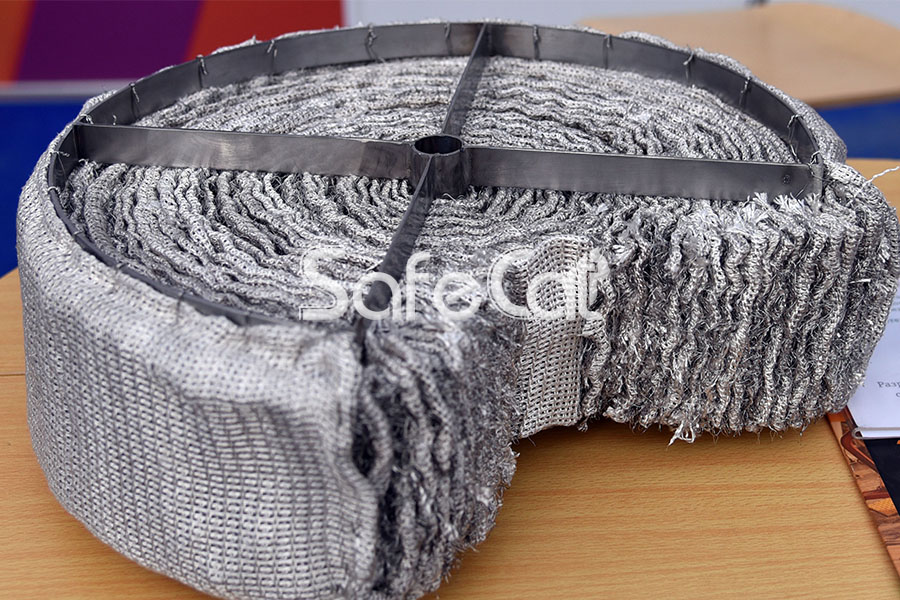
Advantages
Degree of purification
- no less than 90%
Pollutants
- VOCs (hydrocarbons – aldehydes, alcohols, ketones, etc.)
- CO (carbon monoxide)
- Products of incomplete combustion
Capacity
- calculated according to the customer’s requirements
-
Application
The use of a solid (heterogeneous) catalyst allows to accelerate the deep oxidation of toxic substances into non-toxic or less toxic at temperatures below the temperature of inflammation.
Fiberglass-based platinum catalyst SC is used for purification of exhaust gases, industrial emissions from contaminants:
- carbon monoxide (CO)
- Volatile Organic Compounds (VOCs)
-
benzene, toluene, xylene, phenol, formaldehyde, methanol, butyl acetate, acetone, acetic acid, styrene and other saturated, unsaturated, cyclic, aromatic hydrocarbons and their derivatives (alcohols, aldehydes, ketones, etc.)
- chloromethane, chlorobenzene, methyl chloride and other organochlorine compounds.
Advantages of platinum catalyst SC for oxidaton of organic compounds:
- high catalytic efficiency
-
lower content of precious metals
-
high resistance against catalyst poisons (can be used for decontamination of gases containing sulfur, chlorine, silicon – common catalyst poisons)
- thermal stability
-
low flow resistance of the catalyst bed.
You can order the manufacture of a batch of catalyst for existing equipment.
For the optimal selection of the required SC plan module, use the Table of the main sources of industrial emissions.
-
Operating principle
The operational principle of SC catalyst is the repeated intermediate chemical interaction of the reacting substances with the catalyst, as a result of which the energy barrier of the reaction is significantly reduced.
In contrast to traditional industrial catalysts, in which the active component is applied to the outer surface of the catalyst body, for SC fiberglass based catalysts, the active centres are localized just under the surface layers of fiberglass. In other words, they are “hidden” in glass and inaccessible to catalytic poisons coming with the gas stream, and are also protected from sintering.
-
The catalytic block is preliminary heated by electric heaters** to the process activation temperature.
-
The process of oxidation of organic substances to non-toxic carbon dioxide and water is carried out on the platinum catalyst.
*The type of heat exchanger depends on the unit’s construction
**Replacement of heating elements with a gas burner is possible
-
-
Specifications
Parameter Valuе Contaminants C6H6, C6H5CH3, CH3OH, C2H5OH, C4H9OH, C6H4(CH3)2, C20H12, HCHO, C6H5CH(CH3)2, (CH3)2CO, C6H12O2, C8H8, C6H5OH, H2S, CO, NH3, CS2, saturated hydrocarbons, etc. Cleaning efficency no less than 90% Assembly, structure fiberglass based catalyst structured between metal inserts Active element platinum Content of the catalyst in catalytic cartridge no more than 41% Content of the precious metal in fiberglass based catalyst 0,01 – 0,02% mass Operating temperatures 220 – 1000 оС Heat resistance withstands emission surges up to 1200 °C Operating pressure 1 atm Pressure drop on the catalyst cartridge 1,0 Service life ≈ 5 years Operational flexibility withstands lasting humidity fluctuations Breaking load no less than 150 kgf *without taking into account exhaust pipe height
-
Photos
-
Video




